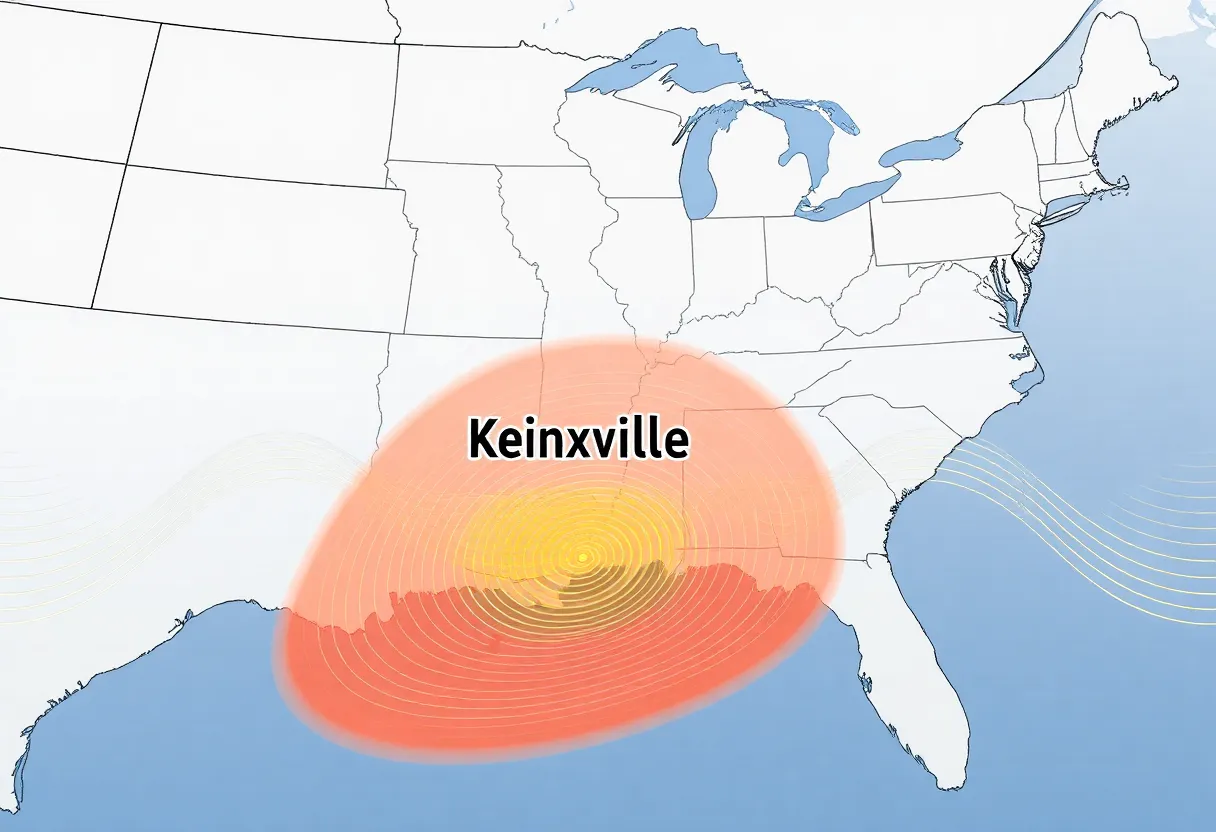News Summary
On May 10, 2025, a 4.1-magnitude earthquake struck near Knoxville, Tennessee, startling residents across the region. Reports poured in to the U.S. Geological Survey, indicating a much-felt tremor with effects reaching the Carolinas and Georgia. While aftershocks are anticipated, this seismic event highlights the geological activity in East Tennessee, known for its unique seismic landscape.
A 4.1-Magnitude Earthquake Shakes the Southeastern U.S.
On May 10, 2025, at 9:04 a.m. Eastern time, a **4.1-magnitude earthquake** made its presence felt near **Knoxville, Tennessee**. The tremor struck around **12 miles southeast of Greenback**, situated roughly **30 miles south of Knoxville**. Residents all around were startled as the quake rattled their morning routines. Even folks as far away as the **Carolinas** and **Atlanta, Georgia**, felt the effects of this seismic event.
So, What Happened?
In the first hour alone, more than **23,000 reports** were logged with the **U.S. Geological Survey (USGS)**, showcasing just how widespread the sensation of shaking was. Many people initially mistaken the sensation for something mundane: a **low-flying aircraft** overhead. For some, like the resident of **Braselton, Georgia**, this brief moment of confusion quickly turned to realization when they learned about the earthquake.
Meanwhile, closer to the epicenter, the reactions were a little more dramatic. A resident near Knoxville reported that the **walls began to shake**, coupled with a loud **rumbling** sound that startled the entire family awake. Talk about an unexpected wake-up call!
What Comes Next?
For those keeping an eye on seismic activity, it’s worth noting that the USGS has indicated there is a **5% chance** of experiencing aftershocks of **magnitude 4 or larger** in the week following the quake. It’s not uncommon for an aftershock to happen after an initial quake, but generally speaking, these aftershocks tend to be **smaller** than the original tremor.
A Quick Earthquake Crash Course
To put recent seismic activity into perspective, the **magnitude scale** tells us that quakes as small as **2.5** can be felt by a nearby community. When it comes to structural damage, things usually start to get serious around **5.5 magnitude**. Since 1950, there have been **15 earthquakes** measuring **4 or larger** within a **155-mile radius** of Knoxville, with the largest being a **4.7-magnitude quake** back in **1973**. So, East Tennessee certainly isn’t a stranger to earth-shaking events.
The last notable quake in this region took place in **December 2018**, when **two earthquakes**, including one measuring **4.4**, triggered shaking that people as far as **Atlanta** could feel. These previous events hint at the volatility of the area.
A Unique Seismic Landscape
One noteworthy aspect of the Eastern U.S. is the **efficiency of seismic waves**. In this region, seismic waves can spread more broadly compared to the West, thereby impacting a larger area when an earthquake strikes. The **eastern Tennessee seismic zone** is actually one of the **most active earthquake regions** in the Southeast, even if it hasn’t historically experienced particularly large earthquakes.
In summary, while it might feel a bit alarming when the ground shakes beneath you, the reality is that East Tennessee has been through its fair share of quakes. As we await any possible aftershocks, residents are encouraged to remain calm and prepared, keeping in mind that, although surprising, these seismic events are part of the region’s geological story.
Stay safe, everyone, and keep an ear to the ground! Who knows, it might just be a little wiggle, or maybe it will be a chance to reflect on the surprising shifts that nature has in store for us!
Deeper Dive: News & Info About This Topic

Author: STAFF HERE AUGUSTA WRITER
The AUGUSTA STAFF WRITER represents the experienced team at HEREAugusta.com, your go-to source for actionable local news and information in Augusta, Richmond County, and beyond. Specializing in "news you can use," we cover essential topics like product reviews for personal and business needs, local business directories, politics, real estate trends, neighborhood insights, and state news affecting the area—with deep expertise drawn from years of dedicated reporting and strong community input, including local press releases and business updates. We deliver top reporting on high-value events such as Arts in the Heart Festival, Westobou Festival, and Masters Week. Our coverage extends to key organizations like the Augusta Metro Chamber of Commerce and Greater Augusta Arts Council, plus leading businesses in manufacturing and healthcare that power the local economy such as Textron Specialized Vehicles, Cardinal Health, and Nutrien. As part of the broader HERE network, including HEREAtlanta.com and HERESavannah.com, we provide comprehensive, credible insights into Georgia's dynamic landscape.





